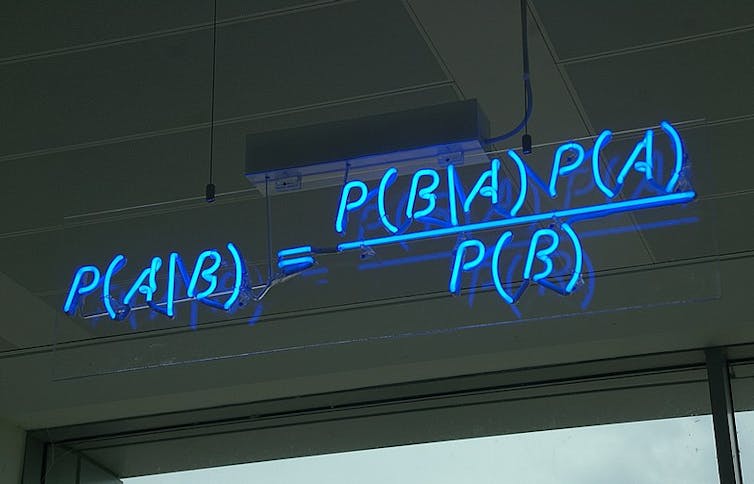Australia's catastrophic east coast floods have been described by the NSW premier as a "one in 1,000-year event, a term that has created a great deal of confusion.
Author
John Quiggin
Professor, School of Economics, The University of Queensland
Lengthy explanations that these terms are not the same as "occurring 1,000 years apart" or "once every 1,000 years" have only added to the confusion.
The simplest explanation is that the actual meaning of "one in 1,000 years" is "having a probability of 0.1 per cent in any given year" (1 in 1,000), which raises the question: why doen't people simply say that?
The main reason is that these terms date back to a time when most people didn't think in terms of probabilities, and even those who did were confused about how they worked. These days we interact with probabilities all the time.
The daily weather forecast includes a percentage probability of rain, and longer-term forecasts give the probabilities of higher or lower than average rainfall according to El Nino and La Nina cycles.
Financial markets bet on the probabilities or interest rates moves. Statistics and probability are taught to children in school.
But this is quite a recent development.
Until the 17th century, even the most elementary concepts of probability theory were unknown. People thought of fate and fortune as essentially unknowable. Even gamblers didn't understand odds.
The birth of probability
Indeed, it was a request from a gambler friend in about 1654 that motivated the French philosopher and mathematician Blaise Pascal to develop the basic concepts of probability with fellow mathematician Pierre de Fermat.
(Pascal also used the idea to develop "Pascal's wager" used to demonstrate the usefulness of believing in God. The idea is that if God exists believers will be rewarded with eternal bliss. If not, they will forgo a limited number of earthly pleasures while alive. No matter how small the probability of God existing, the benefit of believing in God turns out to be infinite while the cost is finite.)
Understanding developed slowly. It was not until the mid-18th century that English clergyman Thomas Bayes was credited with the field's most important development.
The tool bequeathed by Bayes
In its modern interpretation Bayes' theorem gives us the means to revise our view of the probability of an event in the light of evidence about what has just happened.
Whether or not something has just happened is explicitly fed into the recalculation along with updated assessments of the probability that that matters.

Until Bayes, most probabilities were calculated as if they were unchanging, such as the probability of getting "heads" when tossing a coin. Those probabilities could usefully be described as "one in 1,000 years", or "on average, every second toss".
But the probability of a severe flood changes over time as the relationship between the components that make up the weather system change. Whether a flood has occurred gives us evidence about that change.
This makes it no longer helpful to refer to a severe flood as "one in x years" event.
It's long past the time we changed the terminology of once-in-so-many years, but to what? The answer seems straightforward, though the details will be tricky.
First, we need to convert the old measures into severity scales, similar to those used for cyclones and earthquakes, but specific to each catchment.
Having done that, the probability of an event of given severity can be estimated on the basis of historical experience and updated in the light of new evidence.
How would this apply in the case of an event like the Lismore flood?
The initial "one in 1,000 year" description means that such an event would be extremely unlikely if the old relationship held.
Using Bayes' theorem, we would update the initial one in 1,000 probability on the basis of updated information about the chance the underlying relationships are changing, producing new annual probabilities each year.
This is how machine learning works and how medical and insurance odds are updated. Sadly, the revised probabilities will almost certainly exceed one in 1,000.
![]()
John Quiggin does not work for, consult, own shares in or receive funding from any company or organization that would benefit from this article, and has disclosed no relevant affiliations beyond their academic appointment.






